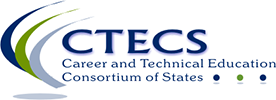Summary
In this activity, students will immerse themselves in the workplace world of safety to determine the advantages of avoiding unsafe situations and reacting appropriately if they should occur. Students will complete vocabulary exercises, engage in discussion, and complete a worksheet that ranks their safety concerns and helps them create a scenario to plan a positive reaction to a safety event.
Learning Objectives
Students will
- determine top safety concerns for the career field they wish to enter
- practice contingency planning
- identify Occupational Safety and Health Administration (OSHA) standards and instructor and manufacturer guidelines
- safety data sheets (SDS) and how to interpret them
- personal protective equipment (PPE)
- universal precautions (used to protect against blood borne pathogens)
- identify risks and hazards in their future workplaces and their current, daily lives
- define emergency protocols (e.g., evacuation routes).
Terms are defined in the vocabulary, though they may not be directly involved in the following activity.
Correlations
This activity was created to be used primarily with
- WRS skill: 22. Workplace Safety
- CCRA skill: 6. Practice personal health and understand financial literacy.
Secondary WRS skills include:
- 1. Creativity and Innovation
- 2. Critical Thinking and Problem Solving
- 3. Initiative and Self-Direction
- 4. Integrity
- 5. Work Ethic
- 12. Career and Life Management
- 14. Efficiency and Productivity
- 16. Information Security
- 18. Job-Specific Tools and Technologies
Icebreaker
Discussion: What is the relationship between workplace safety and productivity?
Or use the following Pre-Activity Questions to create a quiz or start a discussion.
Pre-Activity Process Questions
- Describe a safety issue you have directly experienced.
- Did you plan for possible outcomes of the safety issue you have described?
- Looking back, could you have done something differently to avoid or react to the safety issue you described?
- What safety precautions do you take in your daily life?
- Would you say you were an optimistic or pessimistic person? Please explain.
Instructional Steps
(What the instructor does)
Background
Many CTE programs already have thoroughly prepared units for teaching safety on the job, from welding to cosmetology to nursing. But there are many jobs (e.g., sales and marketing) in which worker safety is not a primary issue because dangers and risks are relatively low. However, because every job is more than a job description, human beings will find themselves encountering workplace hazards, the successful reduction and navigation of which can not only improve your personal health, but can actually get you noticed as someone who values safety for self and others.
There are obvious benefits to being a professional who values safety in the workplace as well as personal safety. For one, to your employer, fewer incidents mean more productivity. Fewer injuries mean less time missed and less liability. For your professional growth, planning for a variety of scenarios and reactions to safety events can help you become a better planner and leader. Reducing risk often depends on our ability to imagine many possible events and outcomes. This skill has many additional benefits that go beyond safety.
Teachers: Introduce the following government agencies, careers, and elements that directly relate to workplace safety:
- OSHA (Occupational Safety and Health Administration)
- FEMA (Federal Emergency Management Administration)
- CDC (Center for Disease Control and Prevention)
- FDA (Food and Drug Administration)
- PPE (personal protective equipment) requirements
- Safety Engineer
- Public Safety (Fire, Police, etc.)
- Safety policies and legislation
- SDS (Safety Data Sheet)
- Hazardous Waste, symbols and labeling
- Risk Management, Assessment, and Analysis
- Insurance industry
- Medical industry
- Pharmacy industry
- Tool use and machines
Discussion
Discuss some areas of work-life in which most every worker in any career may encounter hazards.
Teachers: Walking them through the following (worker safety issues) will help students complete their activities:
- Ergonomic risk factors, lifting, and slip, trip, and fall injuries
- Weather and environment
- Driving and transportation
- Worker fatigue and distraction
- Electrical
- Fire
- Chemicals
- Contagious illness
- Violent personnel or customer conflict
- Personal mental health and wellness
Worksheet Walk-Through
1. Using the list on the worksheet, have students rank the top 10 hazards they may encounter in their workplace of choice.
2. Based on the career of choice, describe their number one safety issue concern, create a scenario (believable situation) based on that concern and options for how they would react positively to benefit self and others.
Why is this a helpful exercise? Specifically because those workers who can better predict dangerous scenarios are much more likely to be aware of them (to avoid them altogether) and to react better if they do occur. Being mindful of potential hazards is much different from catastrophic thinking, which is not-productive and can impact wellness. It is simply the difference between optimism and pessimism. Being safety conscious is imagining scenarios in which we avoid unnecessary risk and plan positive outcomes. It is not about (negatively) raising our anxiety levels and dreading the future.
The Power of Positive Thinking
How can positive thinking actually help in what the people at BetterUp Labs in an article by INC.’s Marcel Schwantes calls “Future-Minded” leadership? According to Schwantes, they survey with “34% less depression than their peers, and they are more optimistic about the future, more productive, and have greater life satisfaction.”
Therefore, thinking about safety can make you and others safer, certainly, BUT it can also help you become a better, more optimistic planner and goal-setter. In addition, teams with future-minded leaders “are 18% higher in performance, 18% higher in innovation, and 25% higher in agility…15% more resilient and 19% more engaged” (Schwantes) than teams without that type of leader. All this is brought to your fingertips through optimism and contingency planning.
Artifact
(what the students complete)
- Worksheet, both parts
Evaluation Method
Post-Activity Process Questions
- How can optimism and contingency planning enhance other workplace readiness skills?
- How can emergency planning and management be an example of leadership?
- What are some careers that directly use contingency planning or which require an ability to assess risk or envisioning how scenarios can go right or wrong?
- How can it help us personally and professionally to think optimistically of solutions even when thinking about “worst-case scenarios”?
- What is the number one safety concern you have for working in your future career?
Differentiation Method
(to address learning styles and disabilities)
- Teachers prepare a safety scenario, based on an environment for a career related to the current course/program rather than having students write their own, and have students answer the remainder of the second question on the worksheet.
- Teachers contact a speaker from OSHA to discuss workplace safety as a class presentation. Students turn in some type of evaluation or question related to the presentation.
- Students locate current workplace safety issues in the news.
- Students create a timeline of U.S. workplace safety legislation.
Vocabulary
Students will complete vocabulary exercises related to this activity in Quizlet: https://quizlet.com/_axwflj?x=1qqt&i=wcwth
- (leadership) agility, ability to make wise and effective decisions amid complex and volatile conditions
- anxiety, the condition of feeling uneasy or worried about what may happen
- blood borne pathogens, microorganisms in human blood which can cause infection and disease in humans
- catastrophic thinking, involves unrealistically pessimistic appraisals of stress that can spiral out of control and affect others
- CDC, Center for Disease Control and Prevention, a federal agency to protect America from health, safety and security threats
- contingency planning, the process of preparing alternative courses of action that may be used if the primary plans don’t achieve the objectives
- emergency protocols, step-by-step plans to react successfully to an emergency
- engaged, involved and focused
- ergonomics, the study of the human factors that affect the design and operation of tools and the work environment
- FDA, Food and Drug Administration, the federal agency that is responsible for determining if a food or drug is safe and effective enough to be sold to the public
- FEMA, the Federal Emergency Management Agency, focused on responding to natural and other disasters
- first aid, the immediate, temporary care given to an ill or injured person until professional medical care can be provided
- future-minded leadership, considering and planning for many possible outcomes to a particular event in a proactive way to increase the likelihood of a positive reaction
- innovation, an improvement of an existing technological product, system, or method of doing something
- liability, what is risked or owed
- optimism, the tendency to focus on the positive aspects of a situation
- OSHA, Occupational Safety and Health Administration, a federal government agency in the Department of Labor that oversees safe and healthy work environments
- personal health, choices and actions you take as an individual (related to health and wellness) that affect your health
- pessimism, the tendency to focus on the negative and expect the worst
- positive thinking, good thoughts that can boost your confidence and improve your performance
- PPE, personal protective equipment (e.g., gloves, mask, safety glasses, clothing) required for workplace safety, enforced by OSHA
- productivity, the quantity and quality of goods and services produced over a period of time
- resilient, able to recover quickly from loss, damage, or poor decisions
- risk, a situation involving exposure to danger
- safety hazard, conditions in the workplace that can cause immediate harm
- safety incident, an undesired event that hinders completion of a task, puts someone at risk, and may cause injury or other damage
- scenario, an imagined sequence of realistic events
- SDS, safety data sheet, a workplace requirement for chemical use that includes information such as the properties of each chemical; the physical, health, and environmental hazards; protective measures; and safety precautions for handling, storing, and transporting the chemical
- universal precautions, the set of procedures used to avoid contact with body fluids and to reduce the risk of spreading diseases
- wellness, an overall state of well-being or total health
- worker distraction, an unfocused condition that puts workers at higher risk of mistakes and accidents
- worker fatigue, a tired condition that puts workers at higher risk of mistakes and accidents


